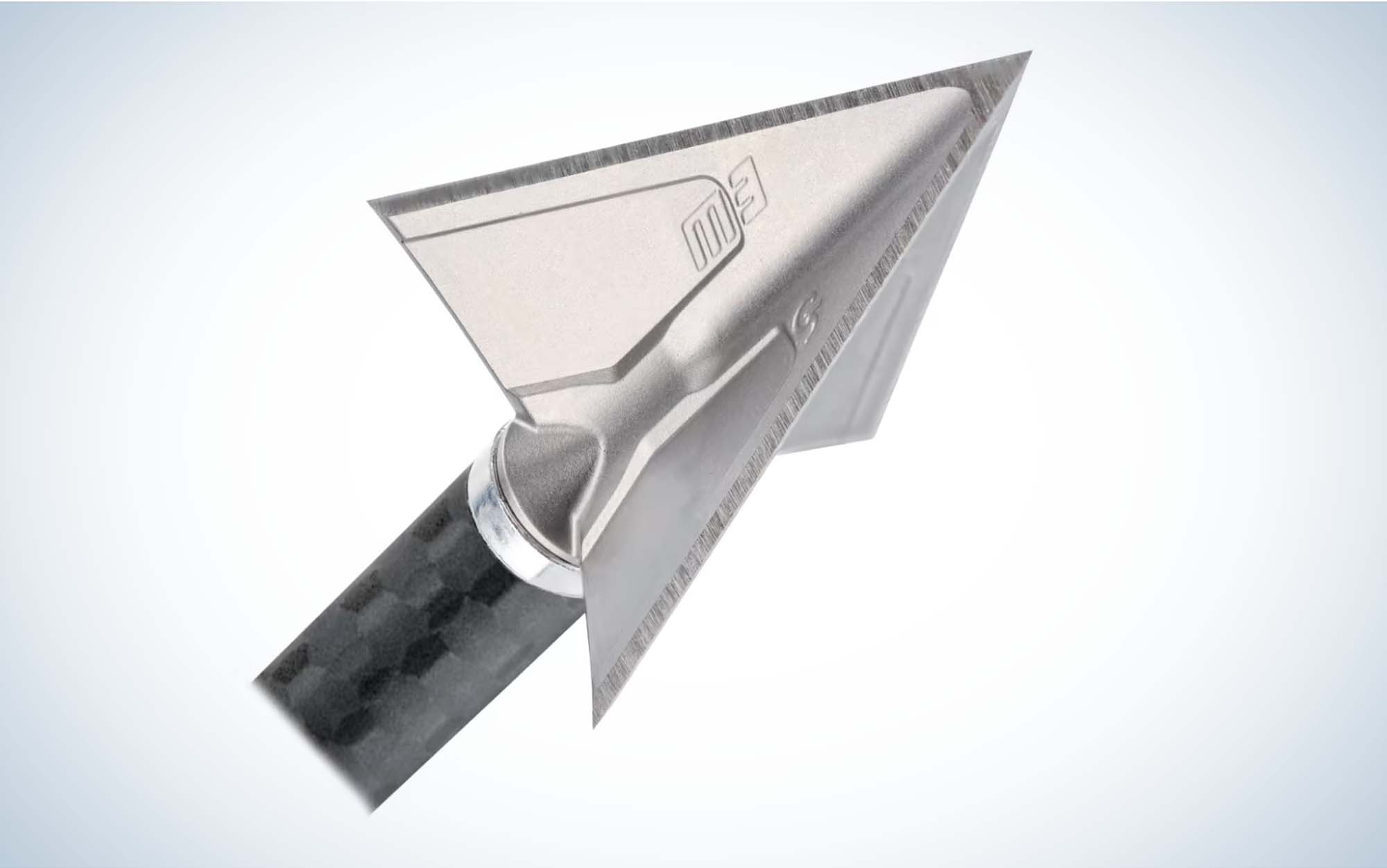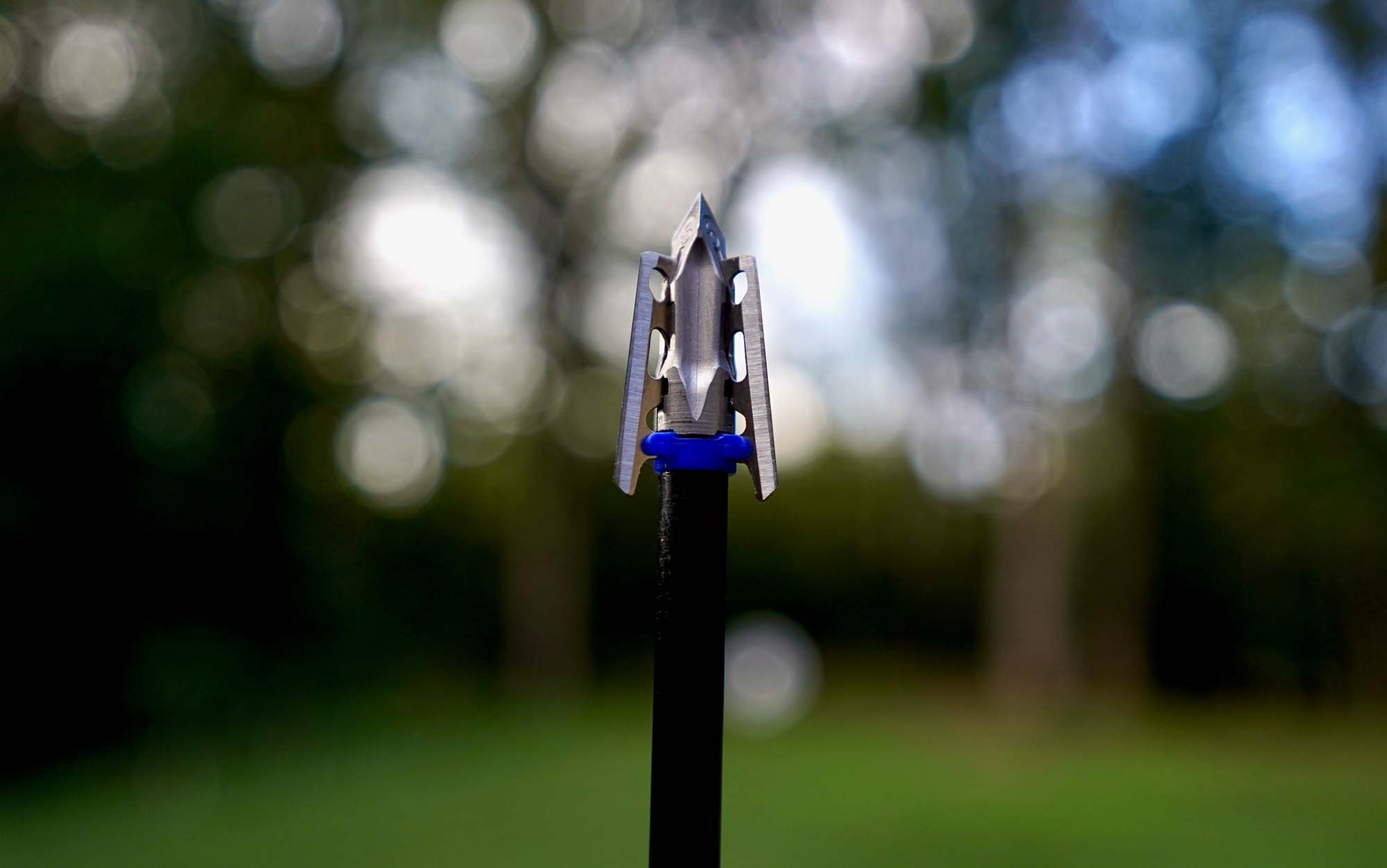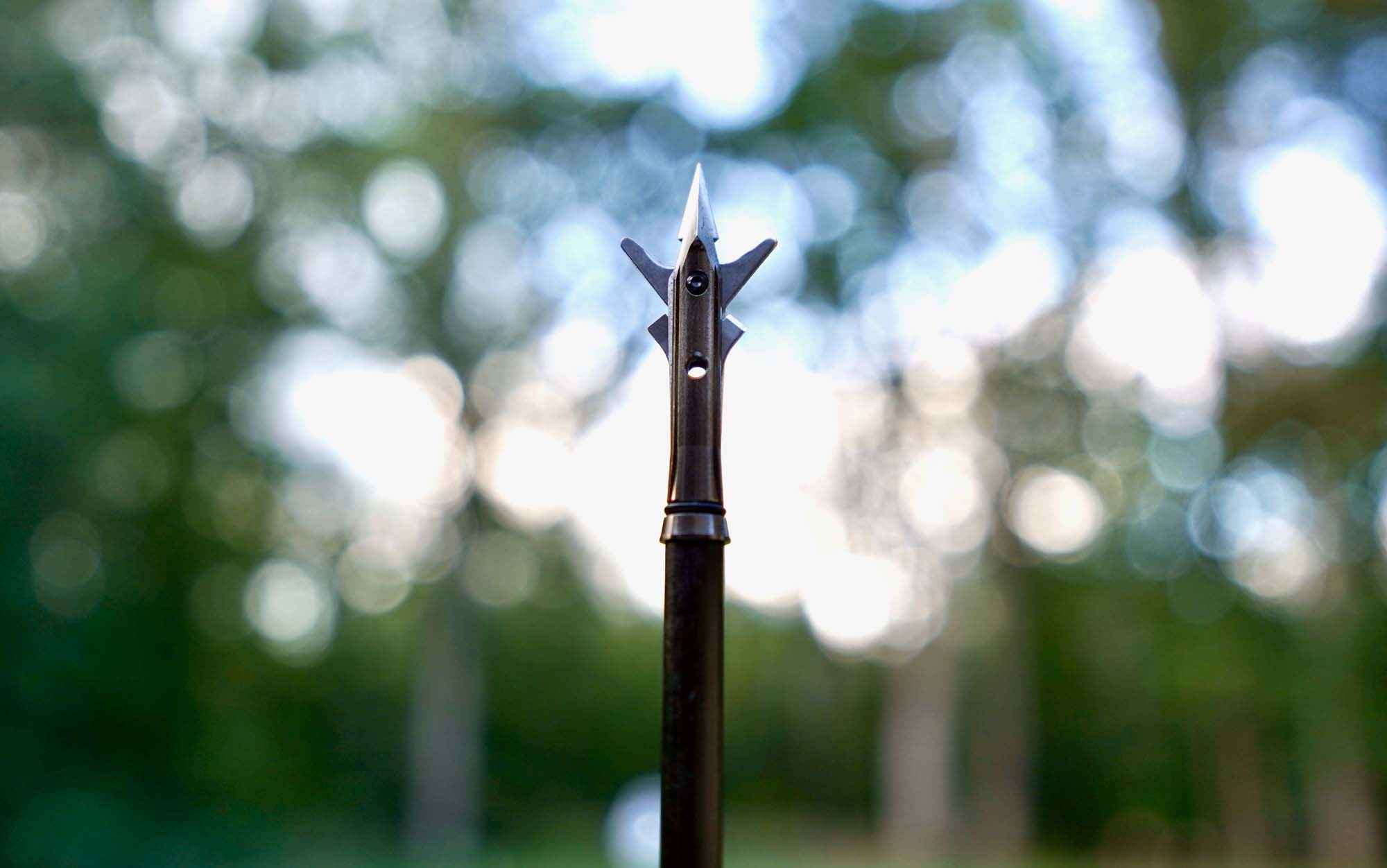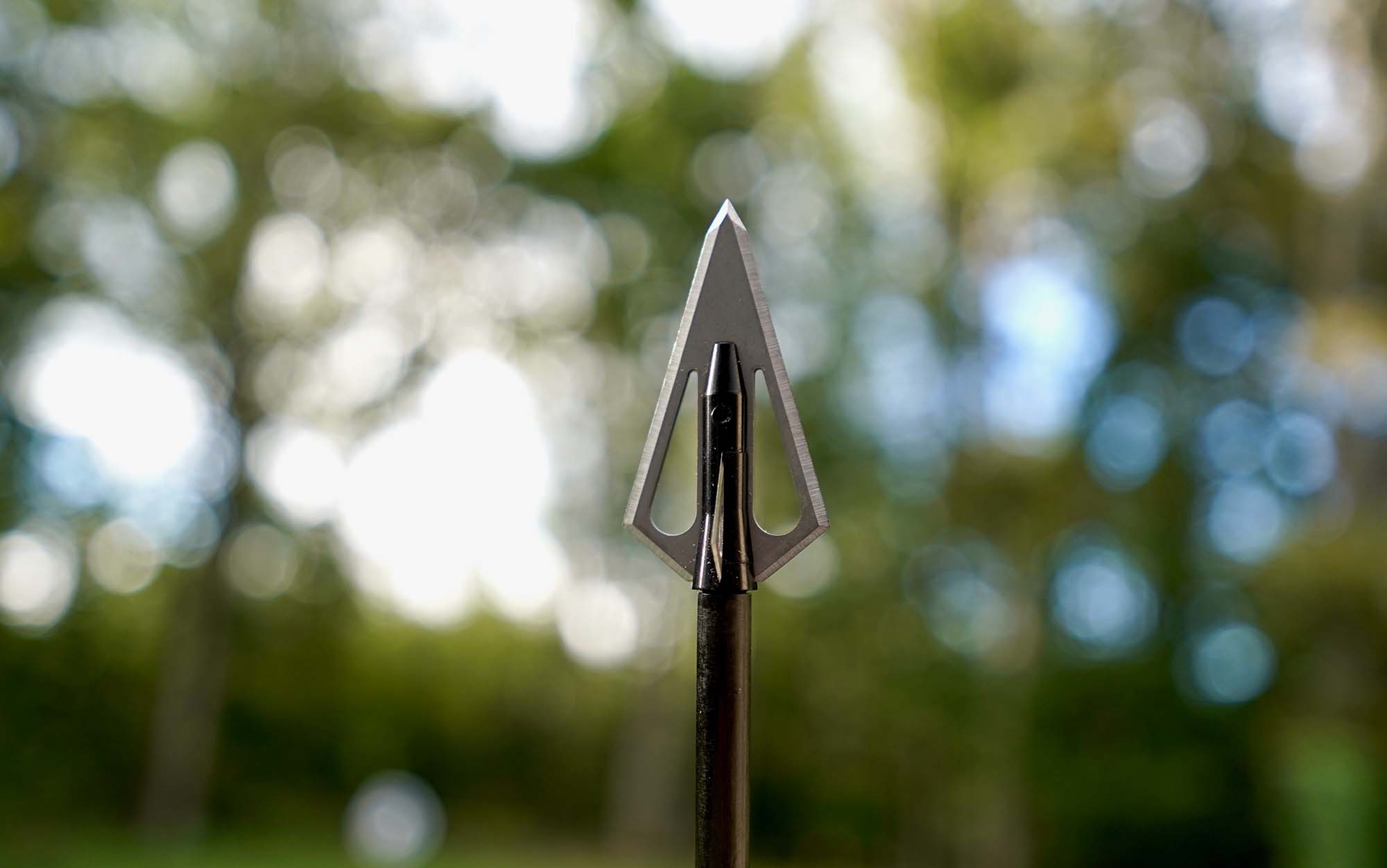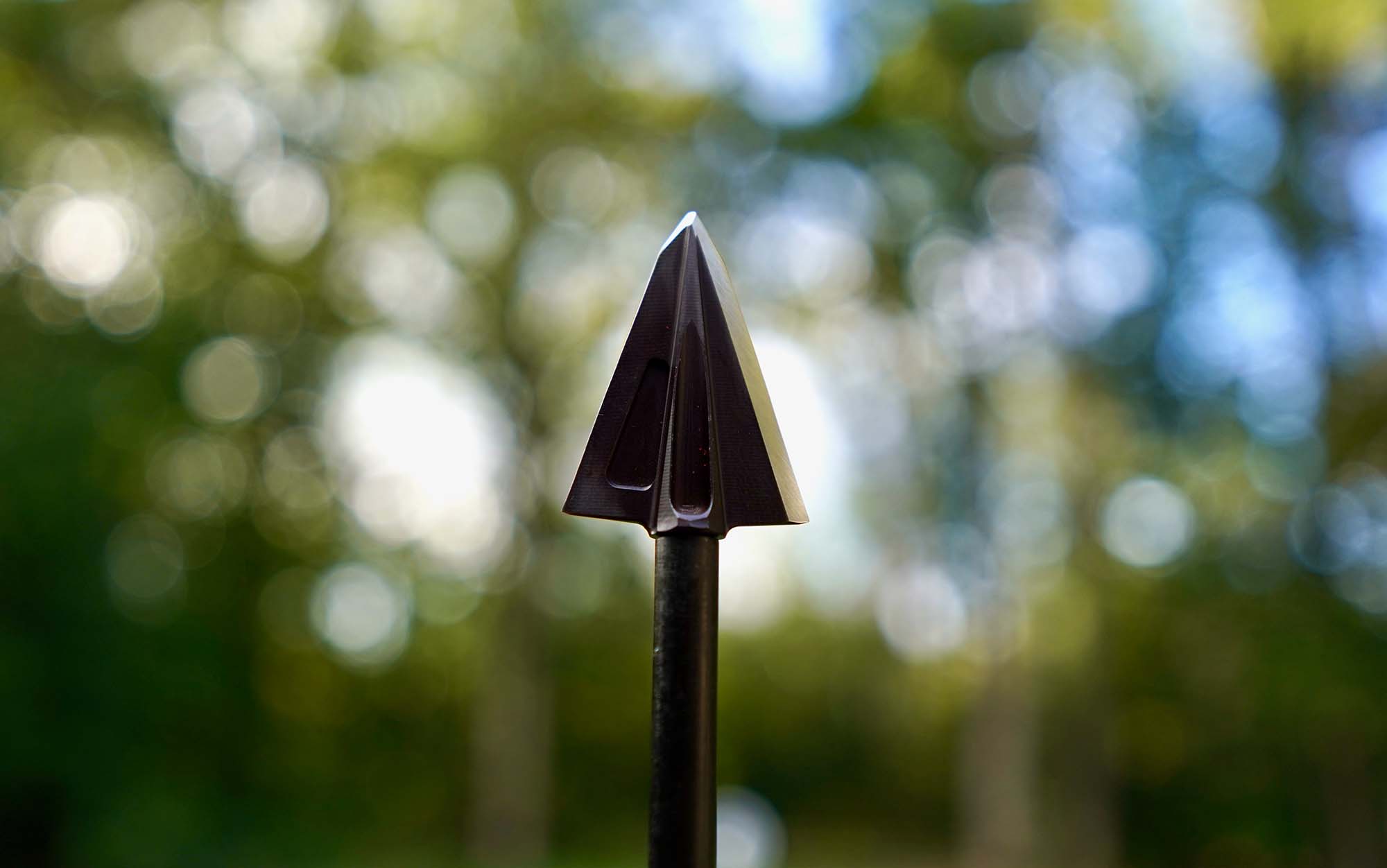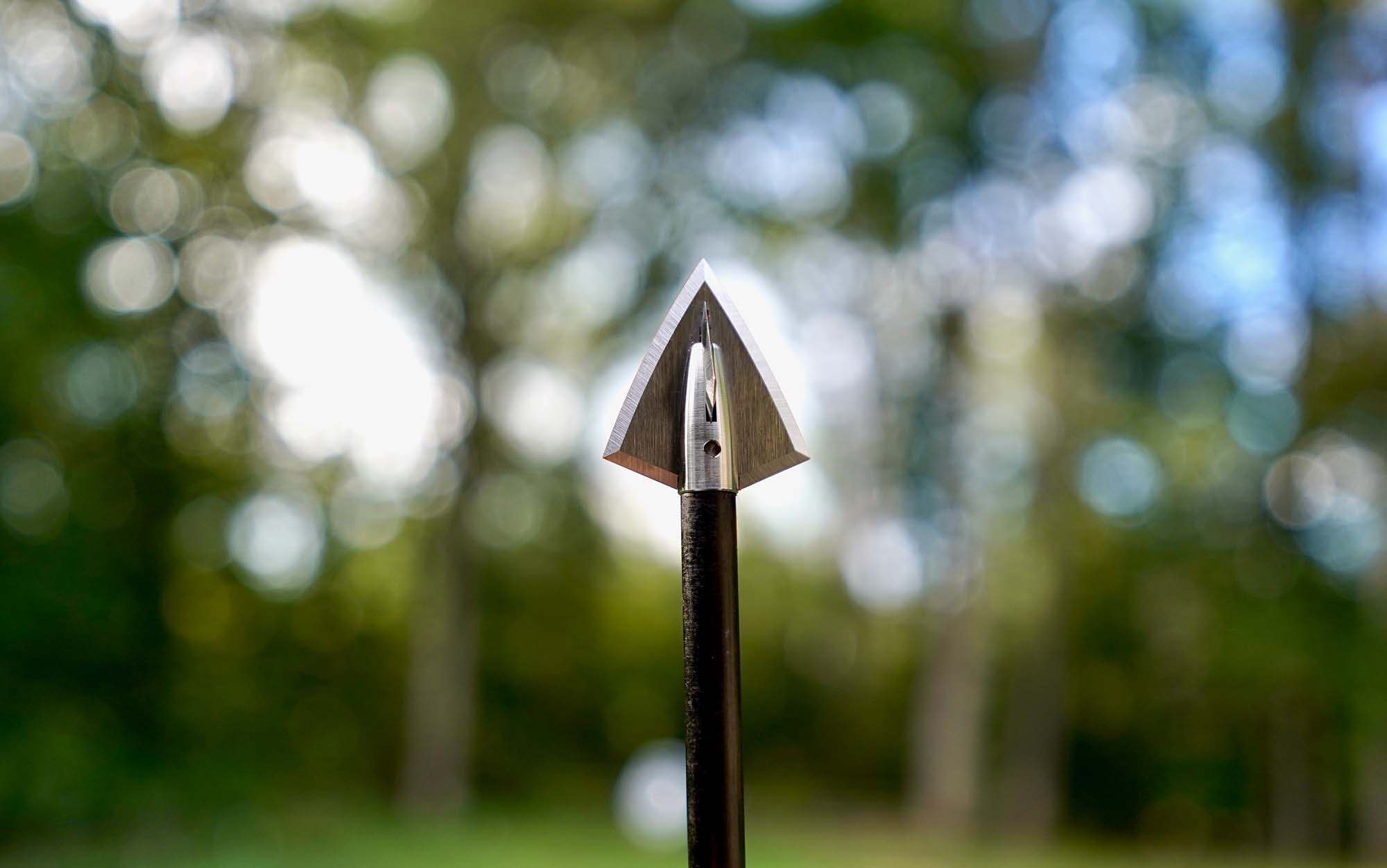We may earn revenue from the products available on this page and participate in affiliate programs. Learn More ›
Published Aug 28, 2023 2:03 PM
If you’re going on an archery elk hunt in your home state or across the country, it’s a costly endeavor in both time and money. So, you don’t want a broadhead chosen by a rookie. That’s why I called John Dudley, who has killed seven archery elk in just the last two years (and many more in previous seasons). He helped me sift through the data I collected while testing 23 broadheads for accuracy, sharpness, penetration potential, and durability. He provided guidance on how to choose a broadhead based on a hunter’s bow setup and his in-the-field feedback on several top broadheads.
After pouring over the data and Dudley’s notes on what makes for the best elk broadhead, here are the top picks.
How We Chose the Best Elk Broadheads and How to Use This Review
Last year, I worked with Cody Greenwood to collect accuracy, sharpness, edge retention, durability, and push force data on 23 top broadheads. You can read about our full test protocol in the best broadheads review.
We learned that most broadheads will shoot pretty well from a tuned compound bow. But, the biggest lesson was that your broadhead choice comes down to the game you’re hunting, the arrow it’s screwed onto, and the bow powering the whole system.
Choosing the Right Head
That’s where Dudley comes in. His feedback on which broadheads are best for different setups is key for helping you choose the right head. He says the top things to look for in an elk broadhead are accuracy, penetration, and cut diameter. Which of those factors you prioritize comes down to your bow setup.
“For me personally, I shoot over 70 pounds of draw weight, a 530-grain arrow, and have a 30.5-inch draw length,” Dudley says. “I’m shooting that 530-grain arrow at 301 fps, so for me, I focus on accuracy because once you get over 300 fps, a fixed blade head gets harder to steer.” That’s why he chooses wide-cutting mechanical heads. Over the past two years, he’s shot seven elk with a G5 DeadMeat, Rage Trypan, and SEVR—he is not sponsored by any of those companies. Those heads work for him because, with his setup, he doesn’t have to worry about penetration as much as someone shooting a lighter draw weight or with a shorter draw length.
“If someone had a 28-inch draw and was shooting 60 pounds—unless they’re going to limit their shots inside of 30 yards—I’d definitely recommend that person choose a head with a lower push force number,” he says.
How to Use this Review
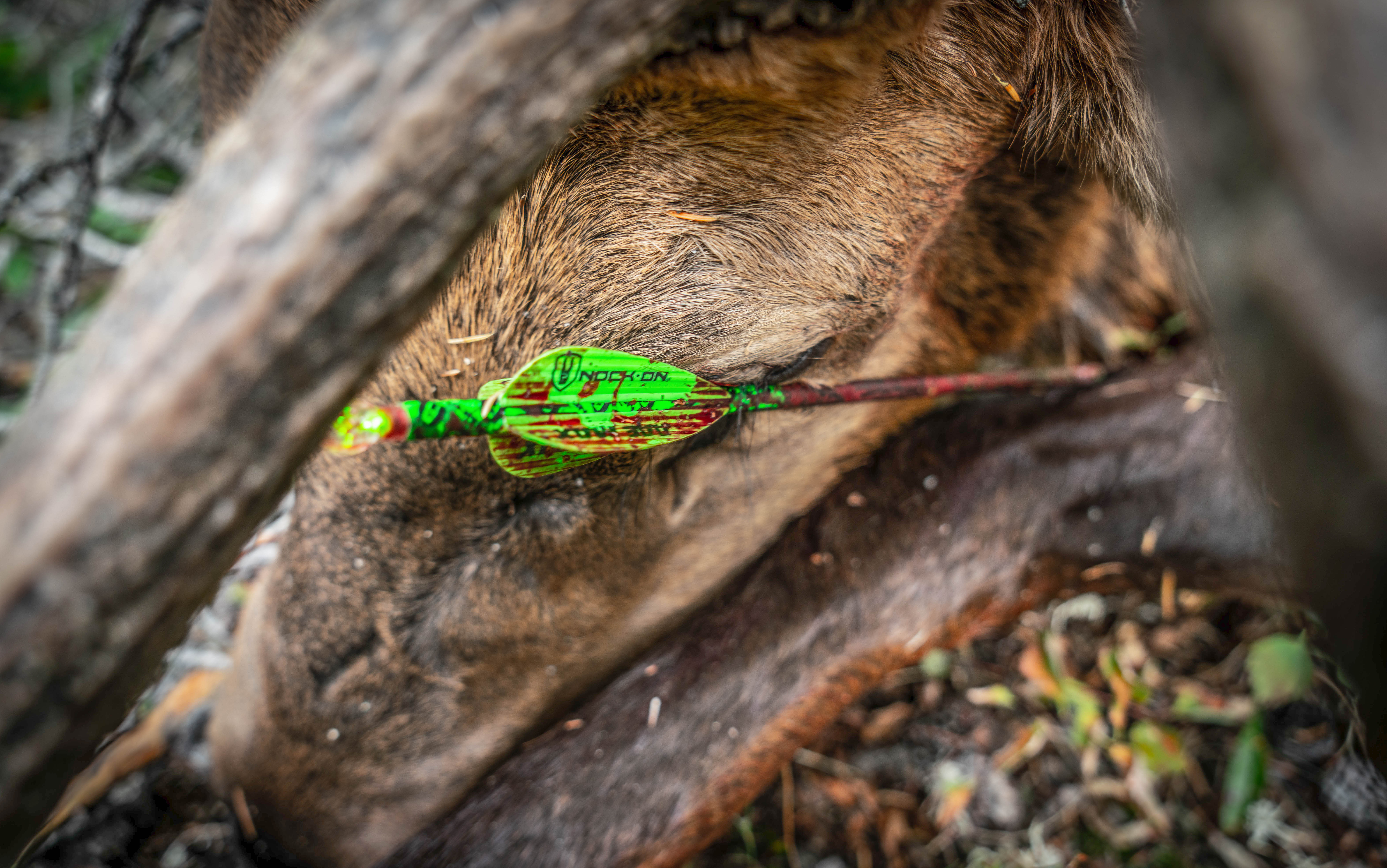
I’ve high-graded the top performers in accuracy and penetration—Dudley’s two top elk broadhead parameters—from my broadhead test and included them in this review. You’ll also find testimonials from Dudley, Aron Snyder, and OL staff writer Tyler Freel on heads they’ve personally used on a variety of big-game species.
I suggest you first look at the chart below, and if you’re pulling 60 pounds or less or have less than a 29-inch draw, that you select a head highlighted in green. If your setup is similar to Dudley’s, then consider heads highlighted in blue.

Once your choices are narrowed down, read the reviews and choose a few you like the best. Then shoot them from your bow and see how they fly. Following Dudley’s advice, go with the most accurate, and you have the best elk broadhead for you.
Dudley offers one final piece of advice for buying broadheads. “If you’re going to try to save money, and be on a budget, you’re better not to cut corners when it comes to broadheads,” he says.
Read Next: Where to Shoot an Elk with a Bow
Best Broadheads for Elk: Reviews & Recommendations
Iron Will Broadheads
Test Results
- Sharp Out of the Box: Yes
- Passed Edge Retention: Yes
- Passed Durability Test: Yes
- Push Force: 48.3 pounds
- Measured Wound Channel: 1.65 inches
- 40-Yard Group Average: 2.6 inches
Pros
- Excellent edge retention
- Durable
Cons
- Users report light blood trails
The Iron Will S100 is a four-blade broadhead made from 0.062-inch A2 tool steel and is available in weights from 100 to 250 grains. The S100 measured 289 grams in the sharpness test, which is to say it’s plenty sharp. This broadhead will also stay sharp in your quiver, and even after passing through an animal it usually just requires some stropping to get it ready to hunt again. In the sharpness retention test, the Iron Will was within 20 grams of its original measurement which was the best for that test. To keep them sharp in the field, be sure to apply a rust preventative like Axe Wax because A2 is a carbon steel.
The S100s performed well in all of our tests, and it’s a top broadhead to consider if you’re in the market for a premium head.
The Iron Will won the push force test—it was the easiest to push through all the media. At a cumulative score of 48.3 pounds, it required a third of the force of the worst performing fixed blade. If you’re shooting a low draw weight, a recurve bow, targeting elk at distance, or want a head that stays sharp, then the Iron Will S100s should be at the top of your list.
G5 Montec M3
Test Results
- Sharp Out of the Box: Yes
- Passed Edge Retention: Yes
- Passed Durability Test: Yes
- Push Force: 80.3 pounds
- Measured Wound Channel: 1.35 inches
- 40-Yard Group Average: *8 inches (one outlier in the group)
Pros
- Best push force of all three blades tested
- Durable
- Quiet in flight
Cons
- Higher push force than the best two and four blade heads
Let’s get the accuracy testing out of the way first. I tested one pack of M3 broadheads, and one of the three heads wouldn’t group with the others. The other two heads consistently grouped very well, and with very little difference from my field point tipped arrow. Dudley and his family have shot the Montec heads extensively with great accuracy results. They’re one of his top recommendations for elk hunters concerned with penetration.
“My wife and my son, who are shorter draw-length, low-poundage shooters, have done really well with the G5 Montec,” he says. “What I personally like about the G5 Montec is that it’s very quiet.”
Aside from accuracy testing, the Montec M3 was a top-performing three blade. It finished first among three blades in the push force with a combined push force of 80.3 pounds. For perspective the Iron Will required 48.3 pounds and the worst performing three blade took 149.1 pounds to push through all three media. Another positive for the Montec M3 is that it’s very easy to sharpen with a flat stone or touch up on a ceramic rod. If we assume my accuracy experience was an exception, then the M3s are certainly one of the best broadheads for elk.
G5 DeadMeat V2
Test Results
- Sharp Out of the Box: Yes
- Passed Edge Retention: Yes
- Passed Durability Test: Yes
- Push Force: 149.45 pounds
- Measured Wound Channel: 2.04 inches
- 40-Yard Group Average: 2 inches
Pros
- One of the largest wound channels
- One of the sharpest out of the package
- Comes with practice head
Cons
- Some users report premature blade deployment
The Deadmeat V2 is a rear-deploying mechanical, available in 100 or 125 grains. The blades are retained by a collar rather than a band. “What I like about the Deadmeat is the sharpness,” Dudley says. “But more importantly is if you prematurely deploy a blade, you can slide it forward and clip it right back in place. The ability to reset an expandable should be considered in a person’s reason to purchase.”
In the gel test, there were only a few broadheads that recorded a wound channel over two inches, and the Deadmeat V2 was one of them. “The Deadmeat is one of the most accurate and devastating mechanicals I’ve used,” Snyder said. Our testing confirmed his in-the-field experience. Aside from the large wound channel, the Deadmeat V2 was accurate, durable, and at 220 grams it was the third sharpest. It also did the second best of all the mechanicals in the push force test, despite its large cutting diameter. The blade sharpness and tip design were contributors to its ease of penetration. Dudley likes that the Deadmeat comes with a match-grade practice head, which flies just like the broadhead and can be shot into a standard bag target without damaging it.
SEVR Titanium 1.5 and 2.0
Test Results
- Sharp Out of the Box: Yes
- Passed Edge Retention: No
- Passed Durability Test: Yes
- Push Force: 166.55 pounds (1.5) and 172.55 pounds(2.0)
- Measured Wound Channel: 1.2 inches (1.5) and 1.5 inches (2.0)
- 40-Yard Group Average: 1.25 inches (1.5) and 1.5 inches (2.0)
Pros
- Accurate
- Large entry holes
Cons
- Rattle in quiver
- Blades can deploy if pushed too hard into a quiver
The SEVR 1.5 and 2.0 are available in 100 and 125-grain weights. The ferrule is made from grade-5 titanium, and the blades are made from unspecified stainless steel. The blades are rear deploying, which means it’ll cut an entrance hole. Once deployed, the blades lock together and will pivot around bone rather than cut through it, which SEVR claims helps penetration.
The SEVR was one of the broadheads Dudley used over the last two years, and he praised their practice mode. To practice with a SEVR you just have to drop in the included set screw to lock the blades together. Then clean out the target residue, replace the o-ring, and remove the set screw when you’re ready to take them hunting. Another area where the SEVR stands out is its low-profile design, which results in accuracy at extended ranges. They were the most accurate mechanical in the test at 1.25 and 1.5-inch groups. Snyder has tested the SEVRs beyond 40 yards. “I can grab any SEVR and group at 100,” he said.
In the durability test, the blades had slight wrinkling but did not bend or break. I would treat the blades as single use, but the ferrule can be reused for multiple animals. Snyder has used the SEVRs on a lot of animals with great success. “I prefer the 2.0 for most things,” he said. “They’ve had a devastating effect on animals.” While Snyder prefers the 2.0, he recommends the 1.5 for elk.
The blades rattle, and you can hear them in your quiver, but Snyder has a solution for that issue. “I put wax between the blades to reduce the rattling,” he said
The SEVR 2.0s were sharp out of the package, but the 1.5s at 494 grams were not. I would recommend checking sharpness on SEVRs and touching them up if necessary. In the push force test the SEVRs did average among the mechanicals, and one design feature holding them back is the arms that deploy the blades. In the open position they are exposed and cause drag. That drag could be minimized if those arms were sharpened rather than rounded. In his testing notes Greenwood said that if a broadhead isn’t cutting, it’s pushing and that causes significant drag.
Read Next: Best Hunting Arrows
Magnus Stinger
Test Results
- Sharp Out of the Box: Yes
- Passed Edge Retention: Yes
- Passed Durability Test: Yes
- Push Force: 63.7 pounds
- Measured Wound Channel: 1.08 inches
- 40-Yard Group Average: 2.56 inches
Pros
- Lifetime warranty
- Accurate
- Good push force performance
Cons
- Bleeder blades on the test model did not cut the gel
The Magnus Stinger is a stainless steel broadhead that comes in weights from 85 to 150 grains and as a two or four blade. They’re an affordable head at around $40 for three. In the accuracy test they shot under a 3-inch group and went through the PVC pipe unscathed.
In the sharpness test, the Stingers were right on the bubble for being considered ready to hunt. Two of the three heads met the 400-gram requirement, but one head was 50 grams over. In the gel test, the bleeder blades did not cut the gel, which reduced the wound channel. So I’d recommend touching up Stingers if you plan on taking them straight from the pack to the field.
In the push force test, the Stingers were a standout performer coming in fourth right behind heads costing more than double its price. If you need a broadhead that will penetrate well and you don’t want to spend $100 for three, then consider the Stingers.
Snyder has had great experiences with Stinger and his wife has used them successfully as well. “If I was on a budget, the Stinger would be at the top of my list,” he said.
Cutthroat S7
Test Results
- Sharp Out of the Box: No
- Passed Edge Retention: Yes
- Passed Durability Test: Yes
- Push Force: 49 pounds
- Measured Wound Channel: 1.1 inches
- 40-Yard Group Average: 2.45 inches
Pros
- Durable
- Professional sharpening available
Cons
- Some users report light blood trails
Single bevel broadheads might be the latest craze, but RMS Gear has been making their Cutthroat heads for years. One recent update is that they’re now made from S7 Tool Steel. S7 is known as a durable, impact-resistant steel with a relatively low hardness, which makes it ideal for a tough and easy-to-sharpen broadhead. “They’re probably the most durable broadheads I’ve used, and I don’t know if I’ve ever ruined one,” Freel said. The cutthroats don’t come sharp out of the package, but RMS Gear will sharpen them for an additional charge.
In addition to being durable, Freel has had excellent passthroughs with them out of his recurve. “I almost always get pass-throughs with the Cutthroat,” he said. “I shot through a bear’s scapula, and it was like it wasn’t even there.” What Freel saw in the field was also seen on the Cutthroat’s very low push force numbers.
Day Six Evo 100
Test Results
- Sharp Out of the Box: Yes
- Passed Edge Retention: Yes
- Passed Durability Test: Yes
- Push Force: 57.3 pounds
- Measured Wound Channel: 1.5 inch
- 40-Yard Group Average: 1 inch
Pros
- Very sharp
- Smallest groups of the test
Cons
- Some users report that the steel is brittle
Day Six Evo 100‘s four blades are made from S30V steel and come in weights from 100 to 175 grains. S30V is known as a quality stainless steel used in knife making, and it carries the same edge retaining properties in the Evo 100—a great thing to have in an elk broadhead.
S30V is known for its edge retention and corrosion resistance, but it’s also known to be brittle steel that’s prone to chip in hard use. That’s because the heat treatment required for S30V makes it hard steel. “The only downside of the Day Six is the steel can be brittle, but they’re a very good head,” Snyder said. With that said, in my durability test the Evo 100 sustained no damage, and the head looked like new. It also had the smallest groups of all the broadheads shot.
The Evo 100 was also the sharpest broadhead out of the package. It was around 150 grams, which puts it in the range of a razor blade. The reason that’s so impressive is that the Evo 100 has a much thicker blade than a razor. A key advantage of starting out so sharp is that in the edge retention test the head measured 222 grams, which is still well below our 400 gram sharpness mark. The head also did well in the push force test finishing third. Although one design feature that might have held it back from be
Final Thoughts on the Best Broadheads for Elk
Dudley stressed two things for choosing the best broadhead for elk: accuracy and choosing a head that compliments your bow setup. Use this review as a guide to help you find a head that’s a good match for your setup and then verify the accuracy before you start chasing bugles.


